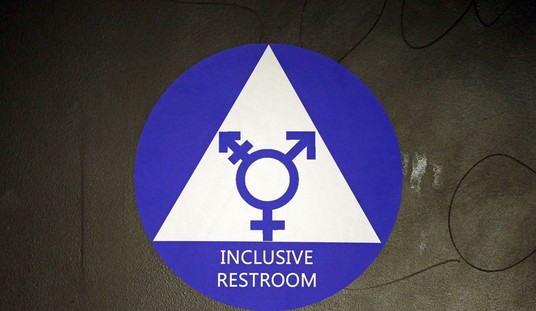by Michael S. Malone
What Americans need right now is a good government-subsidized obituary.
You probably didn’t read the story – because what red-blooded American reads a newspaper anymore? – but apparently the nation’s newspapers, having already lost their editorial dominance to cable news and the Web, their sports coverage to fan sites, their classifieds to Craigslist, and their editorial pages to the blogosphere, are now under heavy assault on their last profitable redoubt: the obituary page.
The story, from the Wire Service That Shall Not Be Quoted, reports that a new study by Northwestern University finds that social networks and on-line memorials are increasingly taking the place of that old print stand-by. This, of course, is shocking news: given the average age of today’s typical newspaper reader, the obituary page is likely the first and only one they read over their bowls of stewed prunes.
Thus, and for good reason, the Northwestern researchers recommend that newspapers not cut back on either those pages or the staff who produce them. To that strategy, one can only say: fat chance.
I’m not trying to be cynical about all of this. I am, after all, a fourth generation newspaperman, with my oldest, Tad, now a fifth. But over the last decade, the newspaper industry has made so many dumb strategic decisions, so obstinately refused to accept reality, and so arrogantly ignored advice from others who have survived similar technological revolutions — that there is a certain rough justice to what is happening to it right now.
That said, I don’t wish this ugly fate on newspapers – nor do I think most people do. No, it’s actually much worse than that: I find I don’t really care that much anymore. I think there is a kind of Kubler-Ross mourning cycle for obsolete technologies as well. First, we decry the loss of something that was so integral to our lives. Then, we sense that it is becoming something of a personal and social burden. Then, at last, we make the break and move on to the new technology – but we still retain a residual affection to what was so important to us. Finally, we grow tired of hearing about the troubles of that old technology, blame it for creating its own problems, and wish it would go away.
That’s how I feel about desktop computers, impact printers, fax machines, analog television, CDs, carburetors . . .and, increasingly, newspapers. I do feel a bit guilty about this attitude – like I’m betraying both my ancestors and those thousand or so yellowing clips with my by-line on them moldering away in a closet – but frankly, I’m too busy to even feel much of that.
Of course, there are some folks who are deeply concerned about the fate of newspapers: incumbent politicians. Most of them still see newspapers as a crucial source of news coverage of all of their fine work, and as a source of endorsements they can put on their campaign fliers. And, of course, most major dailies are also unionized, and thus more than deserving of a bail-out (Other than banks, do the Feds ever bail out industries that are non-union or not obsolete?) Hence the calls for a bailout of the nation’s newspapers, essentially giving the government oversight to assure newspapers retain their financial and editorial independence.
Yeah, that’s going to work. The idea is so risible that only a politician could promote it with a straight face. And it just might happen too, because Congress has shown a remarkable ability to get bills passed while everyone else is laughing at the sheer logical absurdity of the legislation (i.e., spending your way out of debt). Should that day come, and the free, government-mandated newspaper arrives on our porches demanding to be read, you can be sure that the obituary page will be both sizable, and mercifully free of all of those newly-deceased who happened to vote the wrong way in the last election.
Years ago, I was one of the very first people to predict the current crisis in newspapers, I also forecast that by the end of this decade, most of the major newspaper dailies in the U.S. would be dead or dying, with only a few big players (the New York Times, the Wall Street Journal and USA Today, among them) left. I also predicted that they would then serve as national newspapers, scooping up smaller regional and local papers to serve as their metro sections in each region.
Needless to say, an awful lot of that has happened. If there haven’t been as many fatalities as I predicted (the residual value of newspapers, including their small core audiences, is greater than I imagined at the time) it’s pretty obvious that most of America’s big news dailies are crippled, sinking and bleeding both readers and talent. And, rather than snapping up local newsrooms, the big national papers are instead creating their own, virtual, local bureaus (the Times just started one in the Bay Area for example) that mostly exist on the Web. Meanwhile, the demise of traditional papers has also been delayed by the astonishing failure of Web news and the blogosphere to come up a with a solid revenue model – thus giving papers an unexpectedly long window in which they are still the primary source of traditional newsgathering and reporting.
But the biggest mistake I made was not recognizing the sheer tenacity that all established institutions have to survive. I had assumed that, given their history and their loss of top talent, newspapers were now simply too dumb to endure. But in that, I was wrong. I should have known better: even here in Silicon Valley obsolete companies – Sun Microsystems being a good example – linger on thanks to inertia, committed customers and valuable patents. Newspapers too, seem to have figured out a way to limp along at least for another couple decades (at which point there will be no one left in the country who has actually read a newspaper) by slashing overhead, building marginally profitable web sites, and morphing their product to fit their remaining audiences.
What I mean by the last is that newspapers (and even more obviously, troubled national newsmagazines like Newsweek) have essentially abandoned the news business and gone into the comfort business. In other words, they have a pretty good idea now just who constitutes the heart of their loyal readership, and they write for that group, with the intent of either delivering news that fits their world view or sanitizing bad news that does not. And, since there is no way that they can deliver that information in a timely way – they assume that their readers have already learned from the Web about important events — now it is the paper’s job to reduce any discomfort or cognitive dissonance by contextualize the story into the tribe’s existing prejudices and self-image.
This goes a long ways towards explaining what, to an old newsie like me, has been some strange behavior recently by some of our most venerable and biggest national newspapers. Whatever your politics, as a reporter there are just some stories that you would be all over – and yet, in the last couple years we’ve seen one hot story after another all-but ignored by the traditional media. For example, White House scandals are always big news, yet readers of the New York Times have largely been presented with a series of departures from this Administration without ever having heard about the scandals (covered to exhaustion in the blogosphere) that lead to those departures.
An even bigger example is the so-called ClimateGate scandal of the last few weeks, where leaked emails suggested that some global warming experts were misrepresenting and fudging data, all while punishing apostasy in their ranks, to make their case. Given that we are about to turn the world economy upside-down to prevent perceived man-made global warming, this is about the biggest story imaginable. And yet, days went by before most newspapers even deigned to report the story, in many cases using the occasion to defend the scientists.
Appalling, sure, but why do it? I’ve puzzled over this for a long time. I don’t entirely buy the argument that it is politics, pure and simple. I think it is more than that: that newspapers and their editors want to give their declining pools of readers what they want to read – and when the news, no matter how juicy, is not just going to be upsetting (that’s usually okay), but challenges their sense of the way the world works, the story has to be spiked, dribbled out carefully, or swathed in more comforting ‘analysis’.
Will this new editorial model work to save newspapers? Well, it seems to be hanging on to that residual group of loyal, but aging, readers. It doesn’t seem to be capturing any new young readers.
So, what would a real newspaper for the 21st century look like? I have some ideas. I did, after all, recently publish a book (“The Future Arrived Yesterday”) about the future of business organizations. And I think that model would fit for newspapers as well: shrink down to a strong, permanent core of really good editors and then surround that core with a ‘cloud’ of hundreds, even thousands, of freelance reporters — some nearly permanent, others one-timers – and then construct the ‘paper’ in real time, with breaking local, national and international news. Make the paper web-based, multi-media, constantly updated 24/7/365 and scalable (i.e., stories as long as they need to be), and accessible from all digital platforms. Keep a small residual editing and lay-out team to capture this moving target, cut it down to size, and create a print edition. Raise, not lower, subscription fees to this print edition.
The result would be a ‘newspaper’ – timely, protean, multi-media, and most of all, filtered and presented by professional journalists – that you would go to first, even before the raw coverage of the Web and blogosphere. And it could grow or shrink in response to either economics or the news at hand.
That’s a real newspaper model that could work for our times – and without government oversight. Will it happen? Once again: fat chance.
*
If you’ve followed this column or my other writing over the years, you know that I am a great believer in entrepreneurs – to the point that I’m convinced that entrepreneurs, young and old, are among of the biggest heroes of our society.
A lot of folks feel the same way . . .and one of the greatest champions of young entrepreneurs is the McKelvey Foundation, which has done wonderful work providing college scholarships for young men and women who have shown an aptitude for creating new commercial and social enterprises – in other words, the kids (including one of my old Eagle Scouts, Bryce Wilson, currently at Northeastern) who will one day change the world.
Unfortunately, like a lot of non-profits in this harsh economy, the McKelvey Foundation is hurting – which has in turn put financial stress on some of its scholarship students. But, being good budding entrepreneurs, the kids have come up with an innovative solution: Chase Community Giving is running a competition to award funds to other needy foundations. The criteria will be how many supporters of those foundations are willing to sign up on Facebook as a ‘fan’ of Chase Community Giving and then vote for their favorite non-profit.
Obviously, the odds are very long against this plucky little group of college kids succeeding. But if there’s one thing I’ve learned over the years, it is to never discount the ability of entrepreneurs to create miracles. If you’re interested, here’s the Facebook link: http://apps.facebook.com/chasecommunitygiving/charities/794575 . Sign up and give the McKelvey kids your vote.
[For ten years of Michael S. Malone’s columns on technology, business and culture, please visit www.ABCNews.com]









Join the conversation as a VIP Member